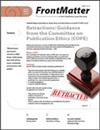Araneidae(Araneomorphae)染色体多样性的揭示:异戊烯中二倍体数量最高,也是该家族X1X2X3X4性染色体系统的首次记录
IF 0.9
3区 农林科学
Q3 ENTOMOLOGY
引用次数: 0
摘要
摘要Araneidae是种类最多的蜘蛛科之一,但很少有核型研究(1.9%),一些物种丰富的分支也没有任何染色体研究。由于家族内部存在许多不确定的进化关系,理解染色体数量和性染色体系统的进化变得更加困难。在这项工作中,对八种蜘蛛属物种(Acacesia benigna Glueck,1994,Actinosoma pentachanum(Walckenaer,1841),Alpaida bicornuta(Taczanowski,1878),Dubiepeira Levi,1991 sp.,Gasteracanta canciformis(Linnaeus,1758),Parawixia bistriana(Rengger,1836),Verrucosa meridionalis(Keyserling,1892)和Verrucosascapofracta Lise,Kester&Silva,2015)进行了染色体分析,有助于讨论染色体进化的一些进化场景。性腺接受秋水仙碱处理、去电离、玻片制备和Giemsa染色。分析的物种显示2n♂ = 24(11II+X1X2),但杜比培拉(Dubiepeira sp.)2n除外♂ = 41(19II+X1X2X3)和两个Verrucosa种♂ = 47(22II+X1X2X3)和2n♂ = 50(23II+X1X2X3X4)。所分析的物种拥有所有具有顶端/末端染色体形态的染色体。2n♂ = 24,在本文研究的大多数物种中发现的X1X2是Araneidae中最常见的核型。本研究首次提供了不同分支“Micrathenines”的染色体数据,该分支是戊烯属(2n♂ = 50),以及Araneidae中X1X2X3X4的第一个记录。染色体数据表明,Verrucosa核型起源中存在一系列裂变事件,Dubiepeira sp.和Araneus ventricosus之间存在密切关系(L.Koch,1878)。此外,到目前为止,双角Alpaida在细胞分类学上可以与其他核型的Alpaida物种区分开来。本文章由计算机程序翻译,如有差异,请以英文原文为准。
Unveiled chromosomal diversity in the Araneidae (Araneomorphae): the highest diploid number among entelegynes and the first record of the X1X2X3X4 Sex Chromosome System in the family
Abstract. The Araneidae is among the most speciose spider families, but there are few karyotype studies (1.9%) and some species-rich clades are without any chromosomal study. Understanding the evolution of chromosome number and Sex Chromosome Systems is made more difficult by many uncertain evolutionary relationships within the family. In this work, the chromosomal analysis of eight araneid species (Acacesia benigna Glueck, 1994, Actinosoma pentacanthum (Walckenaer, 1841), Alpaida bicornuta (Taczanowski, 1878), Dubiepeira Levi, 1991 sp., Gasteracantha cancriformis (Linnaeus, 1758), Parawixia bistriata (Rengger, 1836), Verrucosa meridionalis (Keyserling, 1892) and Verrucosa scapofracta Lise, Kesster & Silva, 2015), contribute to discussions of some evolutionary scenarios of chromosome evolution. The gonads were submitted to colchicine treatment, hypotonization, slide preparation, and Giemsa staining. The species analyzed showed 2n♂ = 24 (11II + X1X2), except Dubiepeira sp. with 2n♂ = 41 (19II + X1X2X3), and both Verrucosa species, which presented 2n♂ = 47 (22II + X1X2X3) in V. meridionalis and 2n♂ = 50 (23II + X1X2X3X4) in V. scapofracta. The species analyzed possess all chromosomes with acro/telocentric chromosomal morphology. The 2n♂ = 24, X1X2 found in most species studied here is the most frequent karyotype in the Araneidae. This study presents the first chromosomal data for the diverse clade “Micrathenines”, the highest diploid number among entelegynes (2n♂ = 50), and the first record of an X1X2X3X4 in the Araneidae. The chromosome data suggest a series of fission events in the origin of Verrucosa karyotypes, and a close relationship between Dubiepeira sp. and Araneus ventricosus (L. Koch, 1878). Moreover, Alpaida bicornuta can be cytotaxonomically distinguished of other Alpaida species karyotyped up to now.
求助全文
通过发布文献求助,成功后即可免费获取论文全文。
去求助
来源期刊

Journal of Arachnology
生物-昆虫学
CiteScore
2.20
自引率
10.00%
发文量
34
审稿时长
>12 weeks
期刊介绍:
The Journal of Arachnology publishes scientific articles reporting novel and significant observations and data regarding any aspect of the biology of arachnid groups. Articles must be scientifically rigorous and report substantially new information.
 求助内容:
求助内容: 应助结果提醒方式:
应助结果提醒方式:


